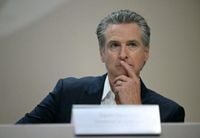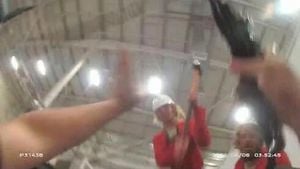California, long considered the Democratic Party’s fortress on the West Coast, is about to face a gubernatorial race that could upend its political reputation. The state’s distinctive top-two primary system, a crowded Democratic field, and a streamlined Republican lineup are converging to create an electoral scenario that’s as unpredictable as it is consequential. As the June 2026 primary approaches, party leaders, voters, and would-be candidates are all watching closely, wondering whether the Golden State’s next governor might—against all odds—be a Republican.
Governor Gavin Newsom, who has become a national figure and is frequently mentioned as a potential Democratic presidential nominee in 2028, will leave office in 2026 due to term limits. According to Bloomberg, Newsom’s exit has sparked a flurry of activity among ambitious Democrats eager to succeed him. But as the race heats up, the party’s path to retaining the governorship is anything but certain.
The Democratic primary field is, to put it mildly, crowded. Rep. Eric Swalwell, who rose to prominence as a key figure during President Trump’s second impeachment trial, officially joined the race in late November 2025. He’s hardly alone. The slate of Democratic hopefuls includes former Rep. Katie Porter, former Los Angeles Mayor Antonio Villaraigosa, ex-Health and Human Services Secretary Xavier Becerra, billionaire activist Tom Steyer, California schools superintendent Tony Thurmond, and California Democratic Party Chair Betty Yee. Rick Caruso, a wealthy former Republican who switched parties to run for mayor of Los Angeles in 2022, is also considering a bid.
Despite their individual profiles, none of these Democrats has the star power to dominate the field. Notably, former Vice President Kamala Harris—arguably the only Californian with the stature to clear the field—has opted not to run, leaving the contest wide open. As Bloomberg notes, this lack of a clear frontrunner could be a critical vulnerability for Democrats in the coming months.
On the Republican side, the situation is strikingly different. Only two major candidates have declared: Riverside County Sheriff Chad Bianco and former Fox News host Steve Hilton. This streamlined field could prove to be a major advantage in California’s unique electoral system.
Here’s where things get especially interesting. Unlike most states, California uses a top-two primary system for gubernatorial elections. Instead of holding separate party primaries, all candidates appear on the same ballot. The two candidates who receive the most votes—regardless of party affiliation—advance to the general election. This quirk has shaped the last three gubernatorial races, each time producing a Democrat-Republican face-off in November, with the Democrat handily winning.
But what if the math breaks differently this time? Republicans typically garner between 35% and 40% of the statewide vote. If Bianco and Hilton split the GOP vote evenly, and Democratic votes are scattered among five or more candidates, it’s conceivable that both Republicans could squeeze into the top two spots. In that scenario, California’s next governor would be a Republican, no matter what happens in the general election.
This isn’t just idle speculation. Recent polls, conducted before Swalwell’s entry into the race, have shown one Republican candidate leading the pack, with the other in third place or tied for third. Katie Porter, who finished second in both surveys, has seen her support slip in the wake of a tense TV interview in October 2025. To make matters even more volatile, nearly half of all respondents in the latest poll were undecided as of late November 2025.
Democratic leaders are keenly aware of the risks posed by the top-two system. As the primary draws nearer, there’s mounting pressure on lower-polling candidates to step aside, consolidating support behind a single contender to avoid splitting the vote. Endorsements from prominent figures could also play a decisive role. Yet, as of now, the biggest names in California politics—Newsom, Harris, and the state’s two Democratic senators, Adam Schiff and Alex Padilla—have all declined to endorse anyone. Their silence leaves the field wide open, with undecided voters left to make sense of a dizzying array of choices.
It’s a situation that has some Democrats nervous, and with good reason. According to Bloomberg, “the most recent polls of the race suggest that Democrats’ nightmare scenario is, at the very minimum, plausible.” The party’s hold on the governor’s mansion, so often taken for granted, is suddenly in question.
There’s another wrinkle to consider: the broader national context. California’s governorship has long been viewed as a stepping stone to higher office—think Ronald Reagan and Jerry Brown. Yet, as Bloomberg points out, it’s been over 25 years since a sitting governor (George W. Bush) successfully made the leap to the White House. In that time, the glare of national media scrutiny has only intensified, making the path from Sacramento to Washington ever more treacherous. “Governors have struggled to handle the intense public scrutiny and media challenges when running for president in recent decades,” notes Bloomberg. That reality may temper the ambitions of some candidates, even as others see the governorship as a launchpad for national prominence.
For California’s Democrats, the stakes could hardly be higher. The state’s reputation as a bastion of progressive policy and a counterweight to Republican leadership in Washington is on the line. If the party fails to rally behind a single candidate, it risks handing the governorship to the GOP—an outcome that would send shockwaves through the national political landscape.
Republicans, for their part, see a rare opportunity. With a disciplined field and a bit of luck, they could break the Democrats’ decades-long hold on the state’s top office. Of course, much could change between now and June 2026. Candidates may drop out, endorsements may shift the tide, and voters may coalesce around a new favorite. But as things stand, the race for California governor is as open—and as fraught with possibility—as it’s been in years.
As the campaign unfolds, all eyes will be on California’s voters: Will they rally behind a single Democrat, or will a fractured field pave the way for a political upset? One thing’s for sure—the outcome will reverberate far beyond the state’s borders, shaping the future of both parties for years to come.




